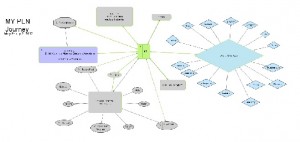The power is on again at my parents’ and the internet is connected, after several hours this morning involving shopping for a router and trouble shooting the wireless. So, let’s take a few minutes to talk about Nings.
I thought a ning was like a blog, or a wiki, etc. But, in reality, ning is an online service that lets people create their own social networks and join/participate in other networks. Ning is specific to the company – www.ning.com
Anyone can sign up and start a ning. Membership is free (with ads) and you can also upgrade your ning membership to eliminate the ads. Once you set up your profile, you can create a ning. You simply give it a name and a url, decide if it is public or private, and a description of the ning and you are ready to get started. Creating a new ning is seems pretty intuitive
So far the only ning I have joined is the ubc met ning at ubcmet.ning.com. This will allow me to connect with other MET students but also to offer some advice for those new to the MET program which is great. Remember, part of PLNing is paying it forward.
As far as joining existing nings…it’s can feel a bit like crashing a private party…but remember the creator of nings have done so because they WANT to network with other people who share their interests. For example, I went to the englishcompanion.ning.com and selected
SIGN UP. My email address was my login, I created a password, and answered a couple of questions about why I was interested in joining the ning. Then I got a response
HERE’S WHAT YOU WILL SEE WHEN YOU SIGN UP.
“Your membership to English Companion Ning is pending approval.
Hello, Stephanie Myers. Your profile details must be approved by the Administrator before you can become a member of English Companion Ning. You will receive an email once your profile is approved. (Withdraw Request)”
While you wait you are able to browse the sit.
Here are a couple of useful links to help you get started in finding, joining, and participating in nings.
The 12 Best Ning groups for teachers to join
7 things you should know about…ning
One last thing, don’t forget YOU can always initiate a Ning too!

